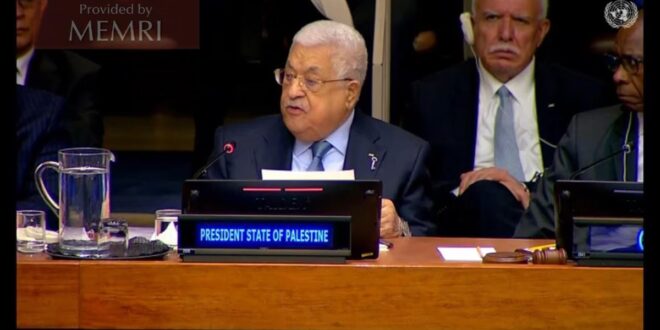On June 21, 2023, the Old Hebron Museum opened an exhibition named “Keys,” featuring keys to the homes of Palestinians who were expelled from them in 1948. The exhibition, which was open to the public until June 26, was initiated and curated by the Hebron Rehabilitation Committee (HRC),[1] an organization established in 1996 by Yasser Arafat that is now operated by the Palestinian Authority (PA).[2] Many of the HRC’s projects are conducted in partnership with the UN and European governments, and/or are funded by them. For example, as noted on the HRC website, the Old Hebron Museum has received “generous funding” from the Swedish government via UNESCO.[3] In 2019-2021 the HRC’s Legal Unit received about $500,000 from the Norwegian government;[4] and a 2018 project for renovating shops in Hebron’s old city received about $3 million from the German government through UNDP.[5] In 2013 HRC won the UN World Habitat Award.[6]
Moreover, according to a report by the NGO Monitor, articles on the HRC website contain virulent anti-Israel rhetoric and praise for terror attacks. An article from 2012, for example, described a terror attack carried out by the Palestinian Islamic Jihad as “a heroic resistance operation.” Furthermore, in 2019 the HRC held a panel with Al-Damir, an organization affiliated with the terror group Popular Front for the Liberation of Palestine (PFLP). HRC Director Imad Hamdan said in 2021 that the Jews had “no connection to Palestine. “[7]
The key, which is the theme of the HRC exhibition, is a widely-used image symbolizing the Palestinians’ aspiration to return to the homes from which they were expelled in 1948, including within the state of Israel. The narrative of return is a prominent component of the PA’s discourse and agenda and of the curricula and textbooks taught in its schools.[8] The centrality of the key as a symbol of return is evident, for example, from the fact that Palestinian President Mahmoud ‘Abbas wore a key-shaped pin when he attended the May 15, 2023 UN event marking the anniversary of the Palestinian Nakba, which was the first event of its kin d to be held by the UN. At the event ‘Abbas delivered a speech in which he pointedly called for the Palestinian refugees’ return to their homes and noted that he himself is a refugee and aspires to return to Safed, the city of his birth.[9]
The following are details about the “Keys” exhibition and statements made at its opening.
HRC Director: The Keys Are Living Evidence Of The Palestinian Refugees’ Right To Return To Their Homes
At the opening of the exhibition, HRC Director Imad Hamdan said that “the key has become a symbol of commitment to the right of return, and living evidence of the Palestinian refugees’ right to return to their homes, whose keys they keep to this day. Many of these refugees, in the homeland and the diaspora, kept the keys they took with them in 1948, and those who passed away bequeathed them… to their children and grandchildren.” ‘Abdo Idris, head of the Hebron Chamber of Commerce and Industry, added: “The mission of the HRC is to hold activities and events to revive [our] cultural heritage and preserve [our] Palestinian identity.” ‘Azmi Khalaila, a collector of antiques and items of historical significance, including from pre-1948 Palestinian homes, said that the keys, over a century old, are from houses in the 1948 territories (i.e., inside Israel) and “represent the Palestinians’ memories of their homes, lands and assets, so it is important to preserve them and pass them on to the next generations.”[10]
 Eurasia Press & News
Eurasia Press & News



